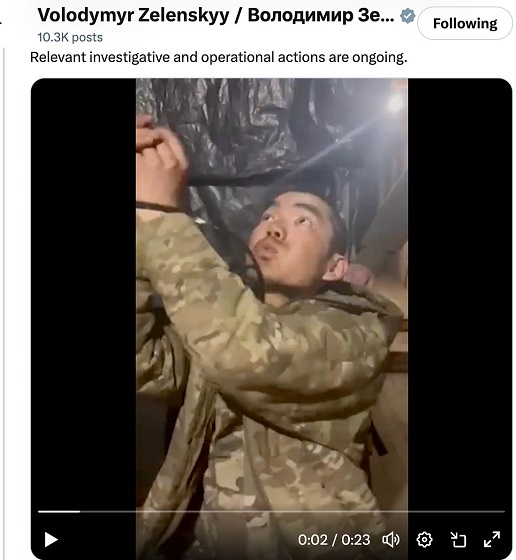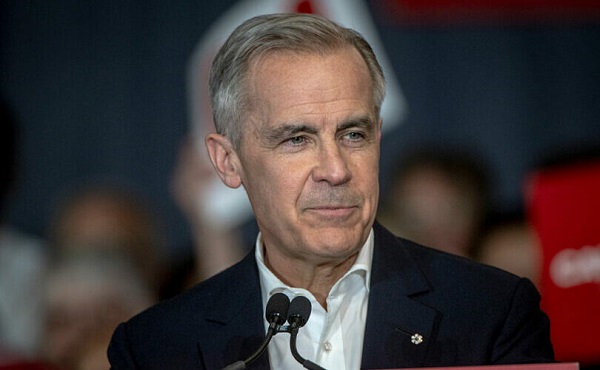Alberta
ASIRT says shooting of armed suspect reasonable use of force
From ASIRT (Alberta Serious Incident Response Team
On Sept. 27, 2017, the Alberta Serious Incident Response Team (ASIRT) was directed to investigate the circumstances surrounding the arrest of a 29-year-old man in Lloydminster that resulted in an officer-involved shooting.
During the arrest, the man was struck by a police vehicle and two RCMP officers discharged their service pistols, resulting in serious injury.
ASIRT interviewed police and civilian witnesses, including the 29-year-old man and both subject officers. Large portions of the events, including the uses of force were captured on audio and video recordings. ASIRT’s investigation is complete.
Having reviewed the investigation, executive director Susan Hughson, QC concluded there were no reasonable grounds, nor reasonable suspicion, to believe the involved officers committed any criminal offence.
On Sept. 27, 2017, Lloydminster RCMP officers attempted to stop a Dodge truck in relation to an outstanding investigation. The truck entered the drive-thru of a fast-food restaurant. An officer in a marked RCMP vehicle pulled behind the truck and activated its lights and siren. Other officers pulled in front of the truck. In response, the driver of the truck drove over the drive-thru curb and up an embankment to the roadway, speeding past two officers standing with their service pistols pointed at the truck. As the driver exited the parking lot, he headed northbound on 40 Avenue and engaged in a high-speed criminal flight from police.
As the truck approached 52 Street, it collided with a SUV driven by a 25-year-old woman, causing extensive damage to both vehicles and causing the woman’s vehicle to roll, landing on its roof. The woman did not sustain serious injury. The visible damage to her vehicle and the force of the collision would have easily left an observer with the belief that any occupant would have likely sustained serious injury or died. Data downloaded from the truck confirmed that immediately prior to the collision, it had been travelling at a speed of 144 km/h, and was moving at 124 km/h at the moment of collision.
The truck stopped on the side of the road. A passenger fled on foot from the truck to an adjacent field. The 29-year-old exited the truck holding a handgun, and immediately ran towards a man who stopped his truck to provide assistance.
An officer in pursuit pulled over his marked police vehicle and exited upon seeing the collision. He shouted verbal commands to drop the gun as the 29-year-old man ran towards the second truck. When the armed man failed to comply, the officer fired his service pistol. The man kept running and reached the civilian’s truck, attempting to gain entry. With a gun in hand, the man began banging on the driver’s window and yelling for him to “get out of the truck.”
As the armed man stood at the driver’s door, a second officer drove up in his unmarked RCMP SUV and clipped the armed man with the vehicle, causing him to spin away and fall, dropping the gun. As the second officer exited his SUV, the man got up, grabbed the handgun and raised it. The officer fired two shots from his service pistol striking the man.
The man fell to the ground, where he was arrested and handcuffed. RCMP members contacted Emergency Medical Services, who responded to the scene, provided medical attention and transported the man to a nearby hospital. He was subsequently transferred by STARS air ambulance to an Edmonton hospital where he was treated for what would ultimately turn out to be serious, permanent injuries including partial paralysis.
Under S. 25 of the Criminal Code, police officers are entitled to use as much force as is reasonably necessary to carry out their lawful duties. When necessary, where an officer believes, on reasonable grounds, that the person presents an imminent risk of death or grievous bodily harm to the officer or any other person, he or she may use force that is intended or likely to cause death or grievous bodily harm. An officer may also use lethal force in limited circumstances to prevent the flight of a person.
During the course of these events, the 29-year-old man demonstrated he was highly motivated to escape, having driven over an embankment and fled police. He was not only prepared to endanger others to do so, but had possibly already injured or killed an uninvolved woman who had simply been in his path, having forcefully collided with her vehicle. Instead of remaining at the scene of the collision or checking on the condition of the driver of the other vehicle, the man took a handgun from the truck before running towards a vehicle that stopped to provide assistance. In these circumstances, the man objectively presented a risk of death or grievous bodily harm to the occupant of that vehicle. Having directed the man to stop or drop the gun, the first officer’s use of force was reasonable and necessary. This risk became even more immediate when the man reached and attempted to enter the stopped truck. The use of the police vehicle to remove the armed man from the vehicle door of the innocent bystander was reasonable in the circumstances.
Having been fired on by the first officer, and struck by a police vehicle, the man stood and instead of running or surrendering, decided to pick up the handgun. In that moment, the man presented a risk of grievous bodily harm or death to not only the innocent bystander but also to the officer.
The officers’ use of force during this event, while they were lawfully placed and engaged in the lawful execution of their duties, was both reasonable and justified in the circumstances. In the opinion of the executive director, there can be no doubt that the actions of the officers prevented the man from committing what could be characterized as an armed robbery, or more simply, a “car-jacking”, that could have easily resulted in the serious injury or death of the driver of that vehicle. As such, no charges will be laid against the officers.
ASIRT’s mandate is to effectively, independently and objectively investigate incidents involving Alberta’s police that have resulted in serious injury or death to any person.
Alberta
Alberta takes big step towards shorter wait times and higher quality health care

From the Fraser Institute
On Monday, the Smith government announced that beginning next year it will change the way it funds surgeries in Alberta. This is a big step towards unlocking the ability of Alberta’s health-care system to provide more, better and faster services for the same or possibly fewer dollars.
To understand the significance of this change, you must understand the consequences of the current (and outdated) approach.
Currently, the Alberta government pays a lump sum of money to hospitals each year. Consequently, hospitals perceive patients as a drain on their budgets. From the hospital’s perspective, there’s little financial incentive to serve more patients, operate more efficiently and provide superior quality services.
Consider what would happen if your local grocery store received a giant bag of money each year to feed people. The number of items would quickly decline to whatever was most convenient for the store to provide. (Have a favourite cereal? Too bad.) Store hours would become less convenient for customers, alongside a general decline in overall service. This type of grocery store, like an Alberta hospital, is actually financially better off (that is, it saves money) if you go elsewhere.
The Smith government plans to flip this entire system on its head, to the benefit of patients and taxpayers. Instead of handing out bags of money each year to providers, the new system—known as “activity-based funding”—will pay health-care providers for each patient they treat, based on the patient’s particular condition and important factors that may add complexity or cost to their care.
This turns patients from a drain on budgets into a source of additional revenue. The result, as has been demonstrated in other universal health-care systems worldwide, is more services delivered using existing health-care infrastructure, lower wait times, improved quality of care, improved access to medical technologies, and less waste.
In other words, Albertans will receive far better value from their health-care system, which is currently among the most expensive in the world. And relief can’t come soon enough—for example, last year in Alberta the median wait time for orthopedic surgeries including hip and knee replacements was 66.8 weeks.
The naysayers argue this approach will undermine the province’s universal system and hurt patients. But by allowing a spectrum of providers to compete for the delivery of quality care, Alberta will follow the lead of other more successful universal health-care systems in countries such as Australia, Germany, the Netherlands and Switzerland and create greater accountability for hospitals and other health-care providers. Taxpayers will get a much better picture of what they’re paying for and how much they pay.
Again, Alberta is not exploring an untested policy. Almost every other developed country with universal health care uses some form of “activity-based funding” for hospital and surgical care. And remember, we already spend more on health care than our counterparts in nearly all of these countries yet endure longer wait times and poorer access to services generally, in part because of how we pay for surgical care.
While the devil is always in the details, and while it’s still possible for the Alberta government to get this wrong, Monday’s announcement is a big step in the right direction. A funding model that puts patients first will get Albertans more of the high-quality health care they already pay for in a timelier fashion. And provide to other provinces an example of bold health-care reform.
Alberta
Alberta’s embrace of activity-based funding is great news for patients

 From the Montreal Economic Institute
From the Montreal Economic Institute
Alberta’s move to fund acute care services through activity-based funding follows best practices internationally, points out an MEI researcher following an announcement made by Premier Danielle Smith earlier today.
“For too long, the way hospitals were funded in Alberta incentivized treating fewer patients, contributing to our long wait times,” explains Krystle Wittevrongel, director of research at the MEI. “International experience has shown that, with the proper funding models in place, health systems become more efficient to the benefit of patients.”
Currently, Alberta’s hospitals are financed under a system called “global budgeting.” This involves allocating a pre-set amount of funding to pay for a specific number of services based on previous years’ budgets.
Under the government’s newly proposed funding system, hospitals receive a fixed payment for each treatment delivered.
An Economic Note published by the MEI last year showed that Quebec’s gradual adoption of activity-based funding led to higher productivity and lower costs in the province’s health system.
Notably, the province observed that the per-procedure cost of MRIs fell by four per cent as the number of procedures performed increased by 22 per cent.
In the radiology and oncology sector, it observed productivity increases of 26 per cent while procedure costs decreased by seven per cent.
“Being able to perform more surgeries, at lower costs, and within shorter timelines is exactly what Alberta’s patients need, and Premier Smith understands that,” continued Mrs. Wittevrongel. “Today’s announcement is a good first step, and we look forward to seeing a successful roll-out once appropriate funding levels per procedure are set.”
The governments expects to roll-out this new funding model for select procedures starting in 2026.
* * *
The MEI is an independent public policy think tank with offices in Montreal, Ottawa, and Calgary. Through its publications, media appearances, and advisory services to policymakers, the MEI stimulates public policy debate and reforms based on sound economics and entrepreneurship.
-

 2025 Federal Election2 days ago
2025 Federal Election2 days agoHarper Endorses Poilievre at Historic Edmonton Rally: “This Crisis Was Made in Canada”
-

 conflict2 days ago
conflict2 days agoZelensky Alleges Chinese Nationals Fighting for Russia, Calls for Global Response
-

 2025 Federal Election1 day ago
2025 Federal Election1 day agoMark Carney’s radical left-wing, globalist record proves he is Justin Trudeau 2.0
-

 2025 Federal Election2 days ago
2025 Federal Election2 days agoAn In-Depth Campaign Trail “Interview” With Pierre Poilievre
-

 Business2 days ago
Business2 days agoTrump’s tariff plan replaces free trade with balanced trade. Globalists hate that.
-

 2025 Federal Election15 hours ago
2025 Federal Election15 hours agoConservative Party urges investigation into Carney plan to spend $1 billion on heat pumps
-

 2025 Federal Election2 days ago
2025 Federal Election2 days agoElection Security Briefing Confirms CCP-Linked Operation Boosted Carney
-

 2025 Federal Election1 day ago
2025 Federal Election1 day agoDon’t double-down on net zero again





